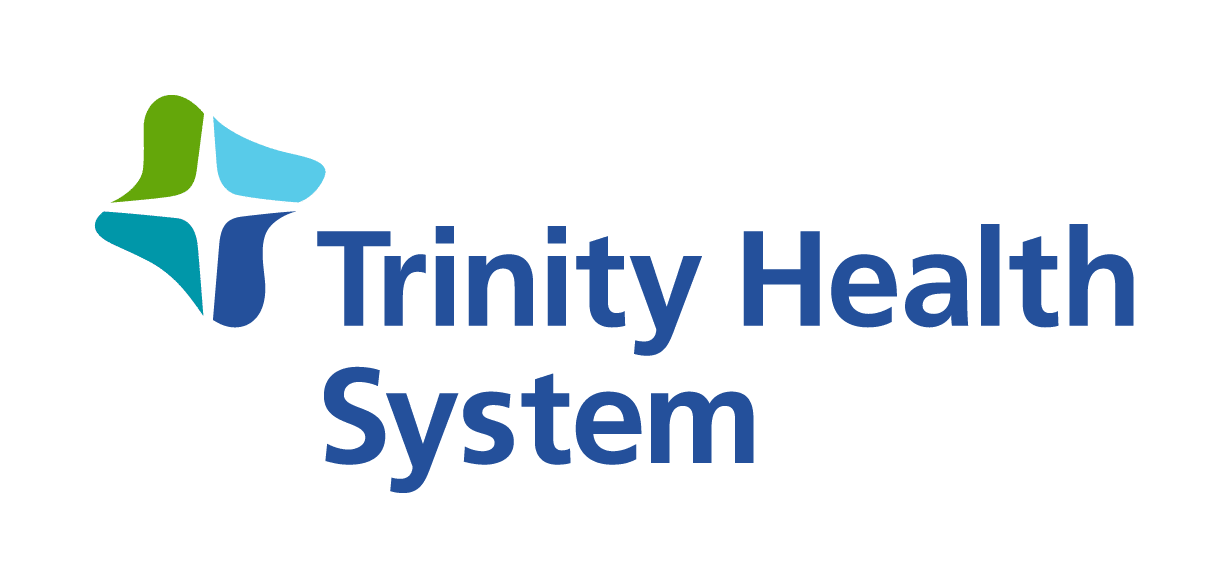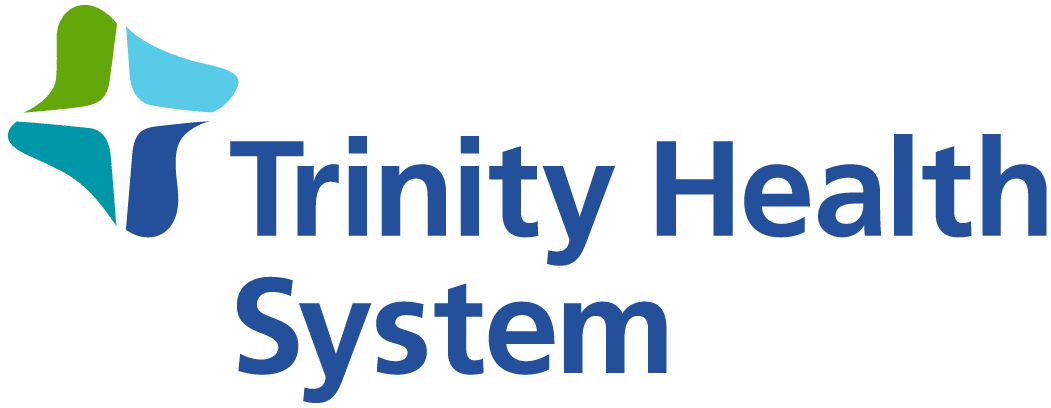Program Philosophy and Goals
Salutations! The Emergency Medicine Training Program at Trinity Health Systems has been accredited by the Accreditation Council for Graduate Medical Education. Our 3 year training program is building a tradition of excellence in both clinical and academic medicine.
The training program offers many outstanding opportunities for residents. First and most importantly, the patient population is culturally, ethnically, and socio-economically diverse. Situated in Steubenville, Ohio, we receive patients with rural, suburban, industrial, and urban emergencies. Our patients range from executives, to inner-city under represented minorities, to victims of industrial accidents, to toxic exposures from farming accidents. Trinity Health Systems is a 24/7 cardiac care center; our residents routinely manage STEMI cases alongside our Cardiologists. We have an on-site helipad for aerotransport of critical patients to and from the hospital. You will have outstanding training in Emergency Medicine.
Our graduates have tremendous procedural exposure, with double to triple the RRC requirements for major procedures like intubations, resuscitations, conscious sedations, and etc. We are unopposed at Trinity Health Systems; the Emergency Medicine resident has full access to procedures at our medical center, including pacers, obstetrical deliveries, and trauma care.
Residents in Emergency Medicine have the opportunity to teach medical students who rotate through our department. We have affiliations with a number of medical schools and have MS3 and MS4 rotators and our residents are valued educators in this educational mission.
Our program is scheduled so that work-life balance is maximized (see clinical program below). Trinity Health System is within an hour drive to Pittsburgh, PA–with easy access to the cultural, sports, and urban amenities there. We also have a 2 week selective in Wilderness Medicine (https://www.wvwildmed.com/), which is very popular amongst the residents. Our site offers an outstanding mixture of micropolitan life, with easy access to wilderness and urban activities.
Didactic Program
The program has five hours per week of didactic conferences, separate from work rounds and bedside teaching. Residents are excused from clinical responsibilities in order to attend conferences. Conferences are held every Thursday from 8:00 AM to 1:00 PM. The program maintains access to a number of educational resources, like UpToDate, Foundations of Emergency Medicine, ROSH Review, and EM Coach.
Features of our weekly didactics include:
1. Core curriculum lectures
2. Foundations of Emergency Medicine
3. Journal Club/Literature Review
4. Morbidity and Mortality Review
5. Joint conferences with Internal Medicine
6. Trauma Rounds
Clinical Program
EM1
6.5 blocks of Emergency Medicine – seventeen 10 hour shifts per block
1.0 block of Pediatric EM
1.0 block of ICU
1.0 block of OB
1.0 block of Anesthesiology
1.0 block of Cardiology
0.5 block of vacation
EM2
7.5 blocks of Emergency Medicine – sixteen 10 hour shifts per block
1.0 block of Trauma
1.0 block of Pediatric EM
1.0 block of ICU
0.5 blocks of EM Ultrasonography
0.5 blocks of Orthopedics
0.5 blocks of Advanced Procedures
0.5 blocks of EMS
0.5 block of vacation
EM3
9.0 blocks of Emergency Medicine – fifteen 10 hour shifts per block
1.0 block of Pediatric ICU
1.0 block of ICU
1.0 block of Elective
0.5 block of Sports Medicine
0.5 block of vacation
Applications
Applications to the Residency Training Program in Emergency Medicine are accepted only through the Electronic Residency Application Service (ERAS) from the NRMP. If interested in applying, you should contact your medical school Dean’s office regarding the appropriate procedure.
All scores and evaluations must be sent through the ERAS system-rarely and only upon our request, will we accept direct correspondence from your medical schools. We do not accept grades and/or evaluations directly from applicants. The decision to accept other material independent of the ERAS system is at the sole discretion of the program director.
Application Timeline
Applications are reviewed in the autumn of each academic year and interview notification is sent via ERAS. We only accept applicants through the NRMP for our EM1 positions. While the dates vary each year, our program usually adheres to the following timeline:
Sept-Jan Application Review and Issue Interview Requests
Oct-Jan: Interviews
Feb: Rank Order List Compiled
March: NRMP Match
Application Requirements are:
- USMLE/COMLEX 1 and 2 scores; step 2 scores are required for ranking but not for interviews
- Medical School Transcript
- 3 Letters of Recommendation (SLOR and academic Emergency Medicine Physicians recommended)
- Dean’s Letter
- ECFMG for international graduates
Format of the Program
The Emergency Medicine Residency Training Program has a 3 year format. The program is designed to meet the special requirements for residency training in Emergency Medicine. All rotations are designed in 2 or 4-week blocks. Over the course of 3 years, roughly two thirds of the time is devoted to Emergency Department rotations (adult, pediatric, trauma). There are four weeks of elective time. Residents receive 2 weeks of vacation each year.
A Personalized Program
Graduated Responsibility
A philosophy of graduated education and responsibility is inherent in all aspects of the Emergency Medicine Residency Program at Trinity Health Systems.
The EM I resident begins, literally, as a student. The residents are given an intense exposure to the basic skills that are the foundation of the practice of Emergency Medicine. The resident is given a clear sense of how each rotation meets the goals of becoming an emergency physician. The resident learns the overall orientation and approach of the emergency physician, grows comfortable in the Emergency Department setting, and begins to manage the acutely ill or injured patient.
The EM II resident begins to acquire the breadth of clinical experiences that are necessary for a successful education. The resident is expected to be able to initiate management of most types of patient problems, and each resident assumes greater responsibility for larger numbers of patients at an individualized speed. Rotations outside the Emergency Department in both the second and third year reflect a variety of increasingly focused and intense experiences which meet specific goals of training.
The EM III resident expands upon teaching, administrative, and supervisory experience. With experience comes maturity of skill and judgment. The EM III resident is able to make disposition decisions, assumes leadership in resuscitations, and by the end of the third year, should be able to manage all aspects of care for all patient problems.
Throughout the 3 year program, residents are expected to refine the personal, interactive, administrative, supervisory, organizational, and educational skills that mark the successful emergency physician.
Research
Residents are exposed to research opportunities throughout their training. In addition to formal core curriculum lectures, journal club and literature reviews allow residents to critically review a wide variety of research methodologies. During their first year, a resident is expected to begin to focus on a research project, with guidance from their faculty. By graduation, each resident should expect to produce at least one scholarly project for submission to a peer-reviewed journal.
Educational Resources
The Department of Emergency Medicine maintains a library of specialized literature. Trinity Health Center has access to full text articles as well as subscriptions to UpToDate. The program maintains access to a number of educational resources, like Foundations of Emergency Medicine, ROSH Review, and EM Coach.
For salaries and other benefits, please visit the home page for the Trinity Graduate Medical Education site at https://trinityhealth.com/graduate-medical-education/
Schedule
Year One
EM1 | |
Emergency Medicine | 30 Weeks |
Pediatric EM | 4 Weeks |
Anesthesia | 4 Weeks |
OB | 4 Weeks |
Cardiovascular | 4 Weeks |
ICU | 4 Weeks |
Vacation | 2 Weeks |
Year Three
EM 2 | |
Emergency Medicine | 30 Weeks (28/Selective) |
Ultrasound | 2 Weeks |
Orthopedics | 2 Weeks |
Toxicology | 2 Weeks |
Trauma | 4 Weeks |
ICU | 4 Weeks |
EMS | 2 Weeks |
Pediatric EM | 4 Weeks |
Wilderness Medicine (Selective) | 2 Weeks |
Vacation | 2 Weeks |
EM 3 | |
Emergency Medicine | 36 Weeks |
Sports Medicine | 2 Weeks |
Pediatric ICU | 4 Weeks |
Elective | 4 Weeks |
ICU | 4 Weeks |
Vacation | 2 Weeks |

